Lotusland’s Japanese Garden reopened this week after a massive $6 million renovation. The late-afternoon ribbon-cutting ceremony included cocktails and hors d’oeuvres and the usual thanking of staff and donors, but one name stood out — the garden’s original architect, Frank Fujii.
Fujii was the son of Japanese immigrants who moved to Santa Barbara when he was 9 years old. He attended a single-room grammar school on the Mesa and later studied at the Riveria’s old State Teachers College under renowned South Coast horticulturalist Peter Riedel. During WWII, Fujii and his family were interned for four years at the Gila River camp in Arizona, but they returned to Santa Barbara, and in 1967, Fujii met Lotusland creator Ganna Walska. Together with stonemason Oswald Da Ros, they began building what would become the botanic wonderland’s Japanese Garden.
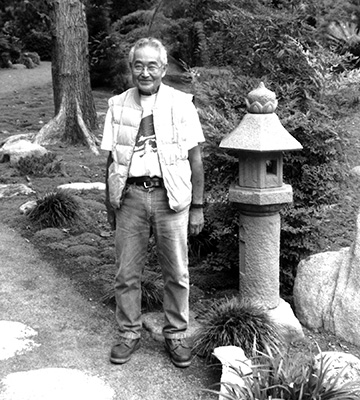
Fujii balanced Walska’s tendency for the dramatic with an insistence on simplicity. He created a space reminiscent of an Edo-era strolling garden with its large central pond and used a design technique called shakkei, meaning to “borrow” a view or element from the larger landscape. It’s evident in the view of Montecito Peak framed by the garden’s Torii Gate. Fujii toiled over the space for four whole decades before retiring in 2007 at the age of 86. His colleagues always admired his passion and persistence but feared his nearly unreturnable Ping-Pong shot, called the “Fujii flop.” He passed away in 2016.
During this week’s ceremony, Fujii’s and da Ros’s families were the first to pass through the gate into the enhanced expanse. They meandered around the pond and paused on the new overlook, called a miwatasu, that hangs above lotuses and koi. It’s an element Fujii had planned but was unable to complete. They ran their hands along bridges made with yellow Alaskan cedar and admired the karesansui, or “dry garden,” with patterns raked into small beige rocks. Before continuing along a path of flowering cherry trees, the families sat on boulder benches carved out of sandstone collected from the 1/9 Debris Flow.
The garden’s 30 stone lanterns, ishi-doro, and pagodas have all been returned to their original positions near fresh plantings of bamboo, broadleaf trees, and six different kinds of aquatic plants, which Fujii loved so much. Lotusland CEO Gwen Stauffer said there were signs of him all around. “The garden bears his hand in a profound way,” she said.
For information and tickets, visit lotusland.org.

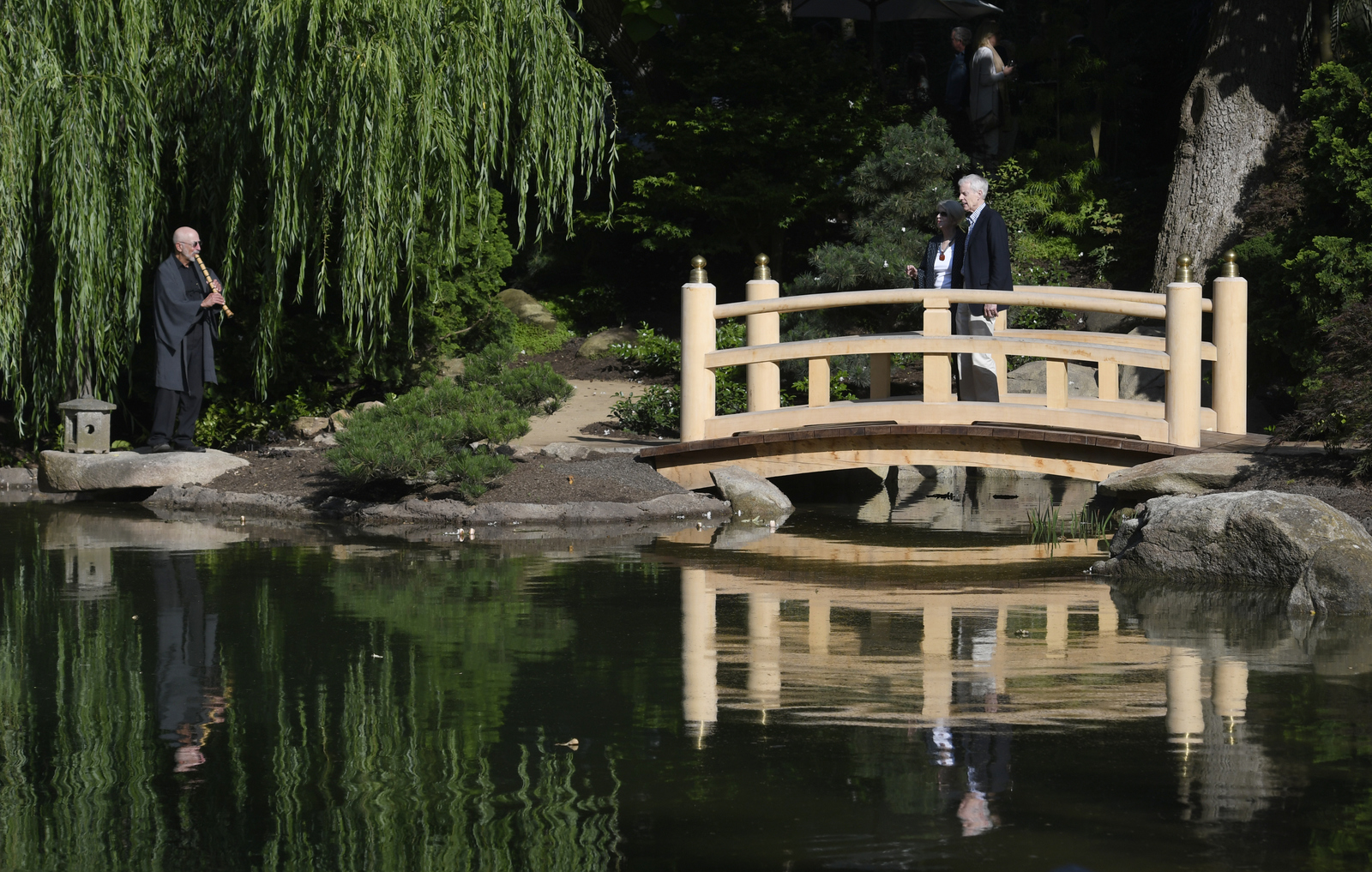
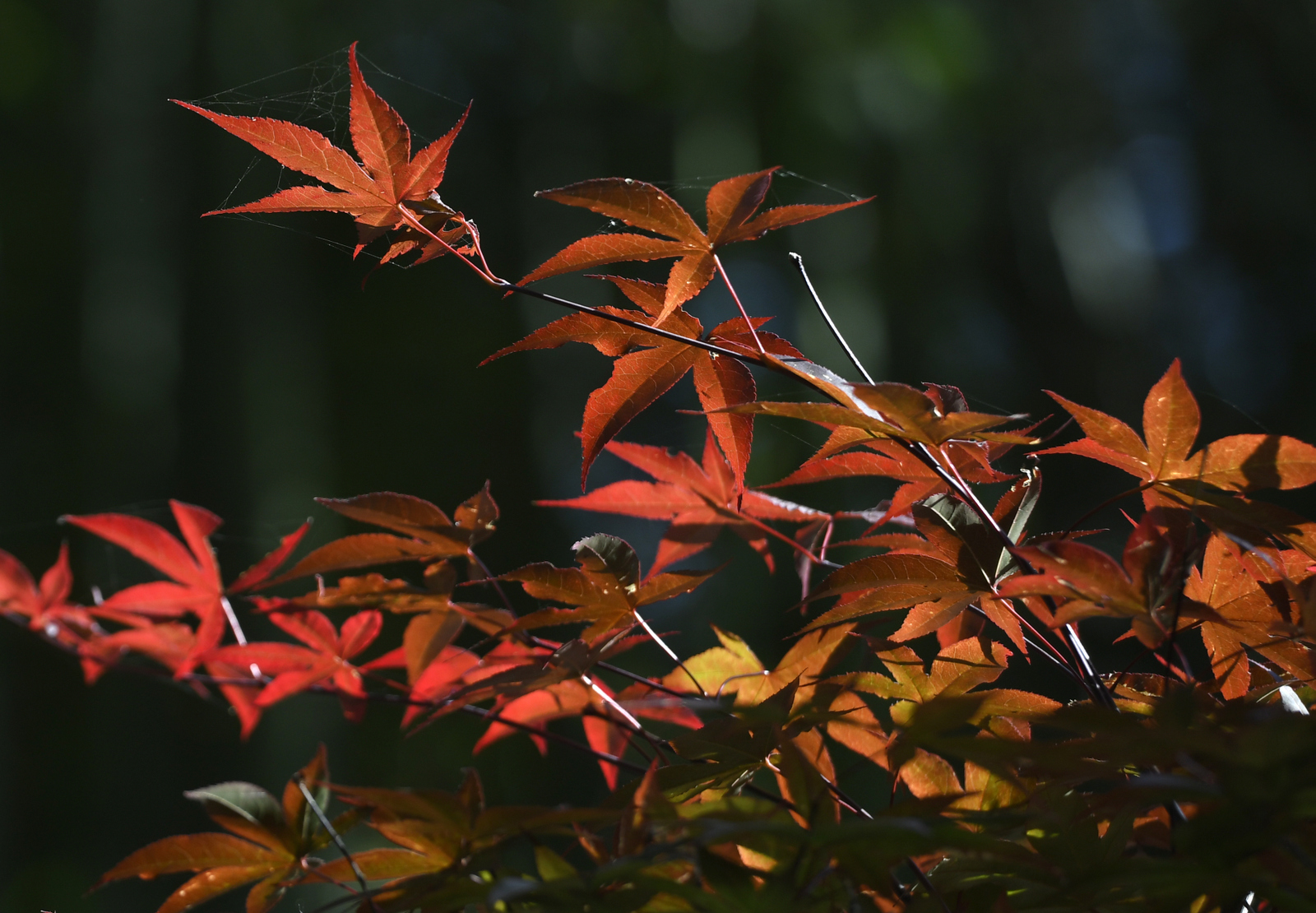
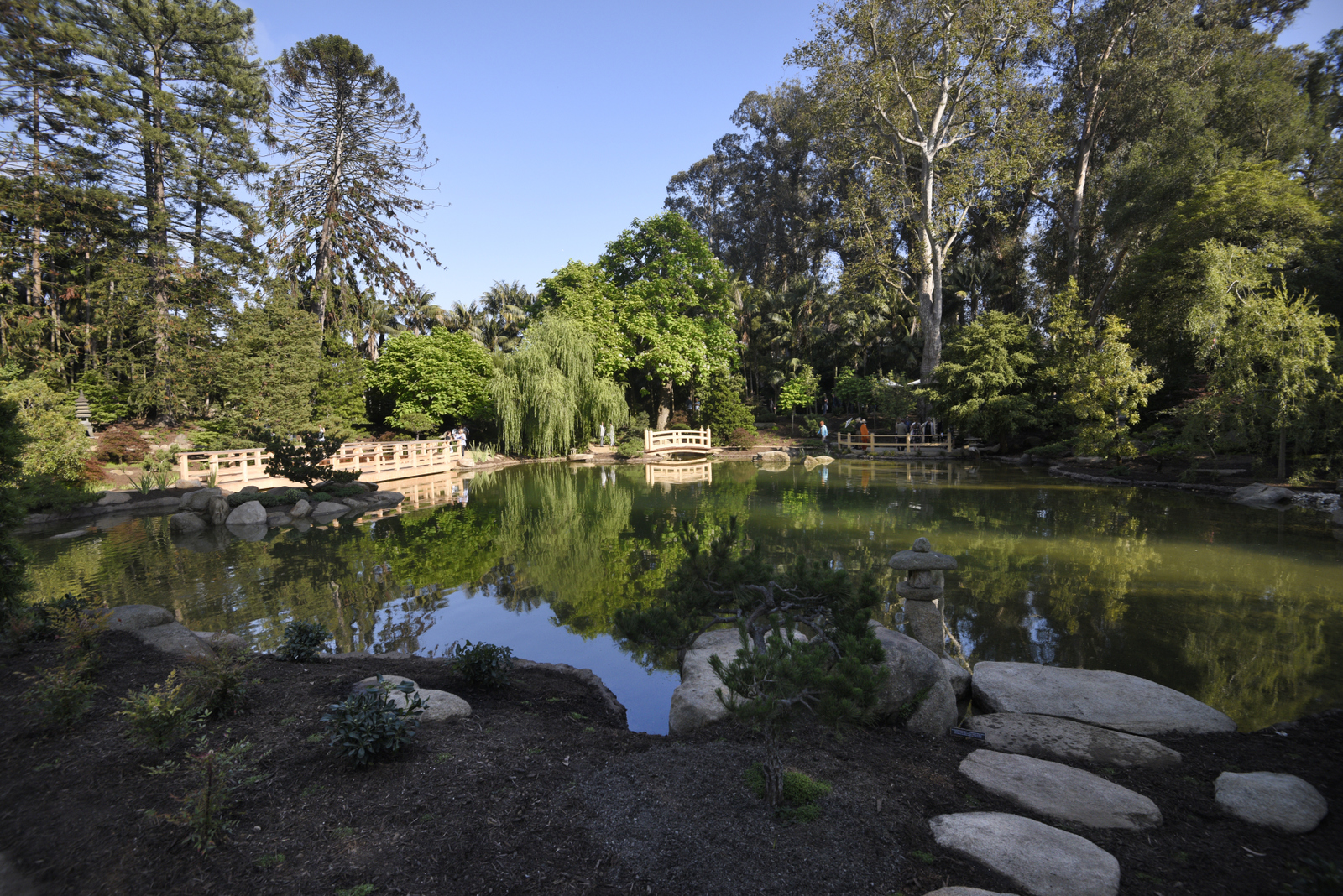
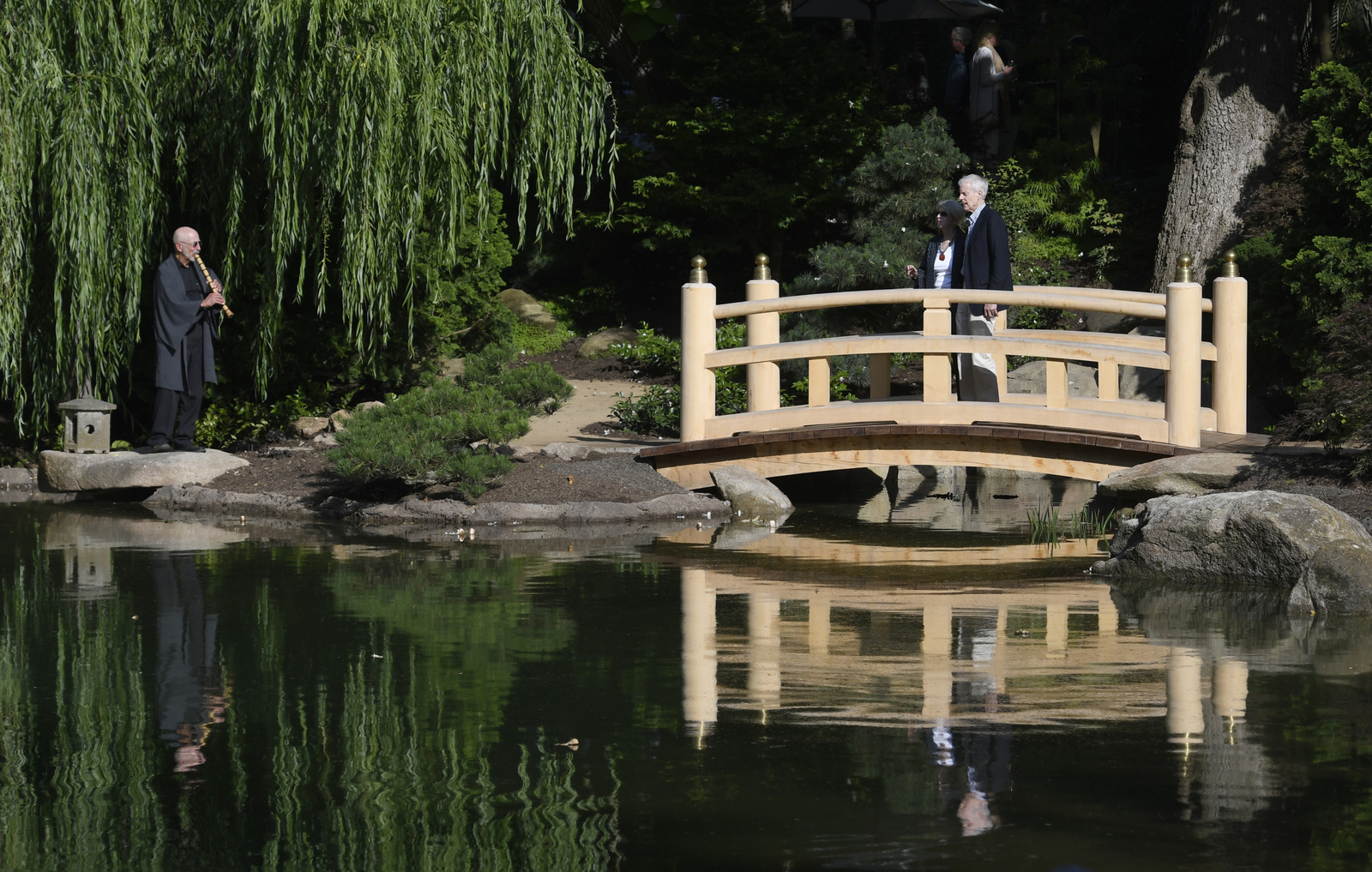
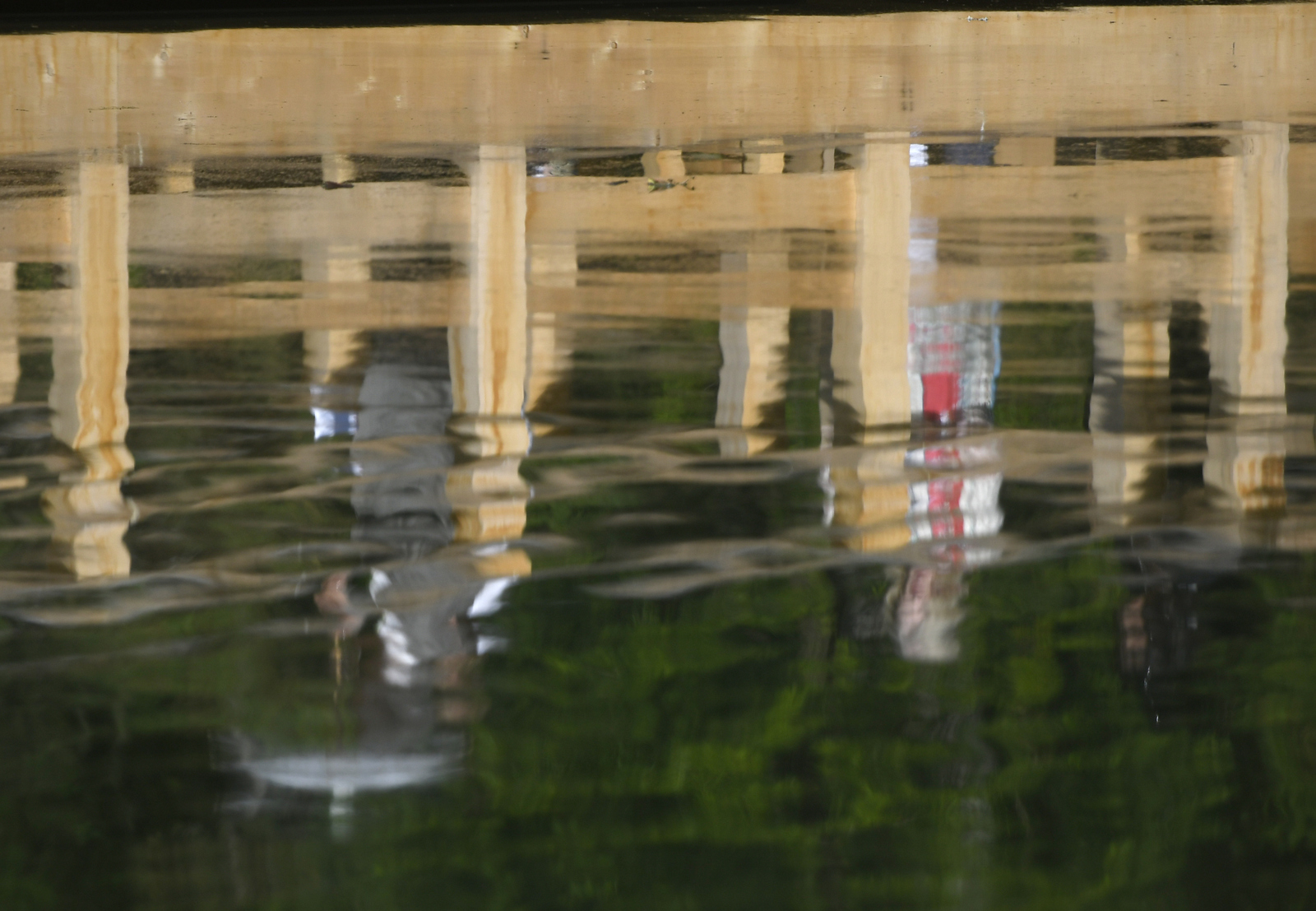
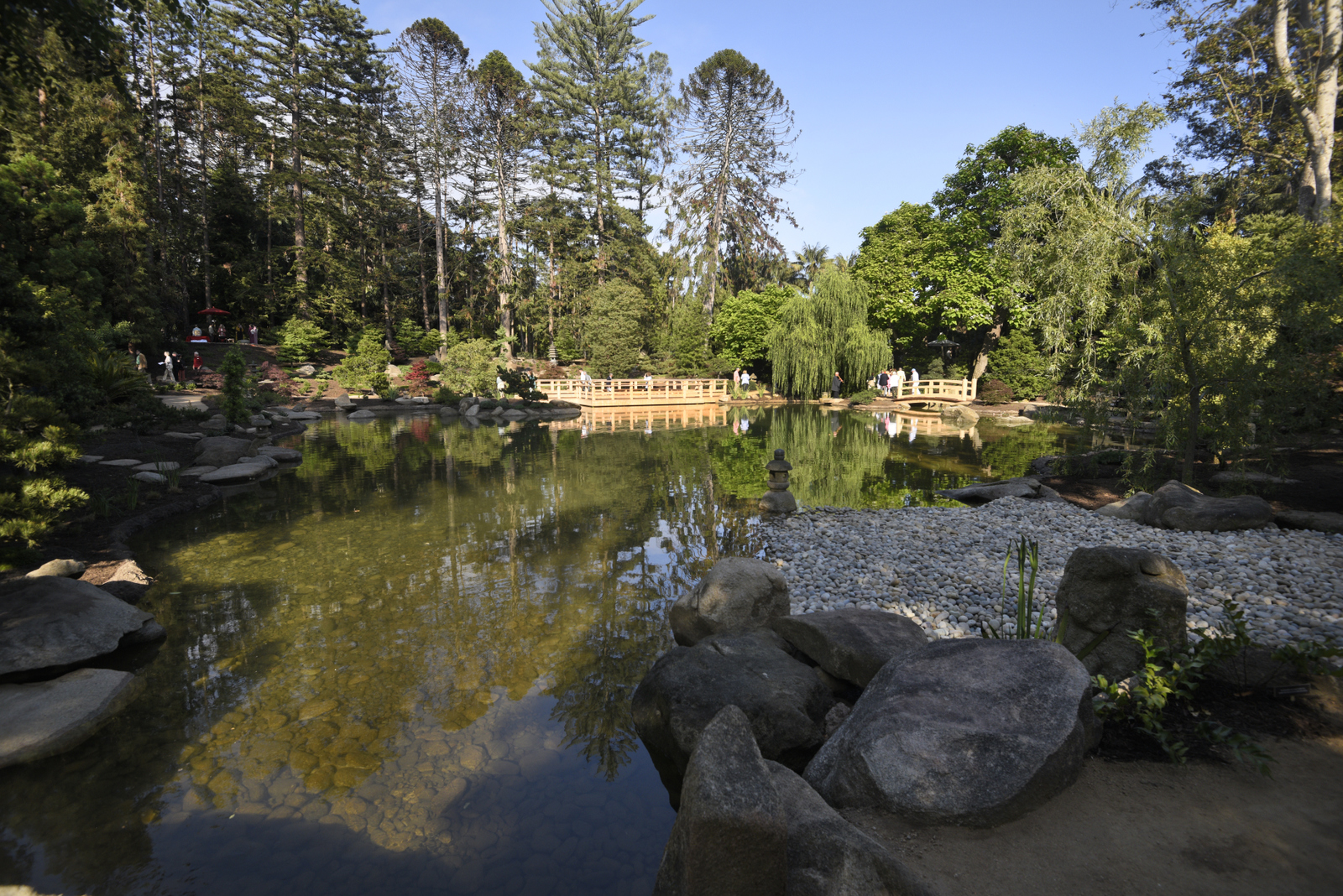
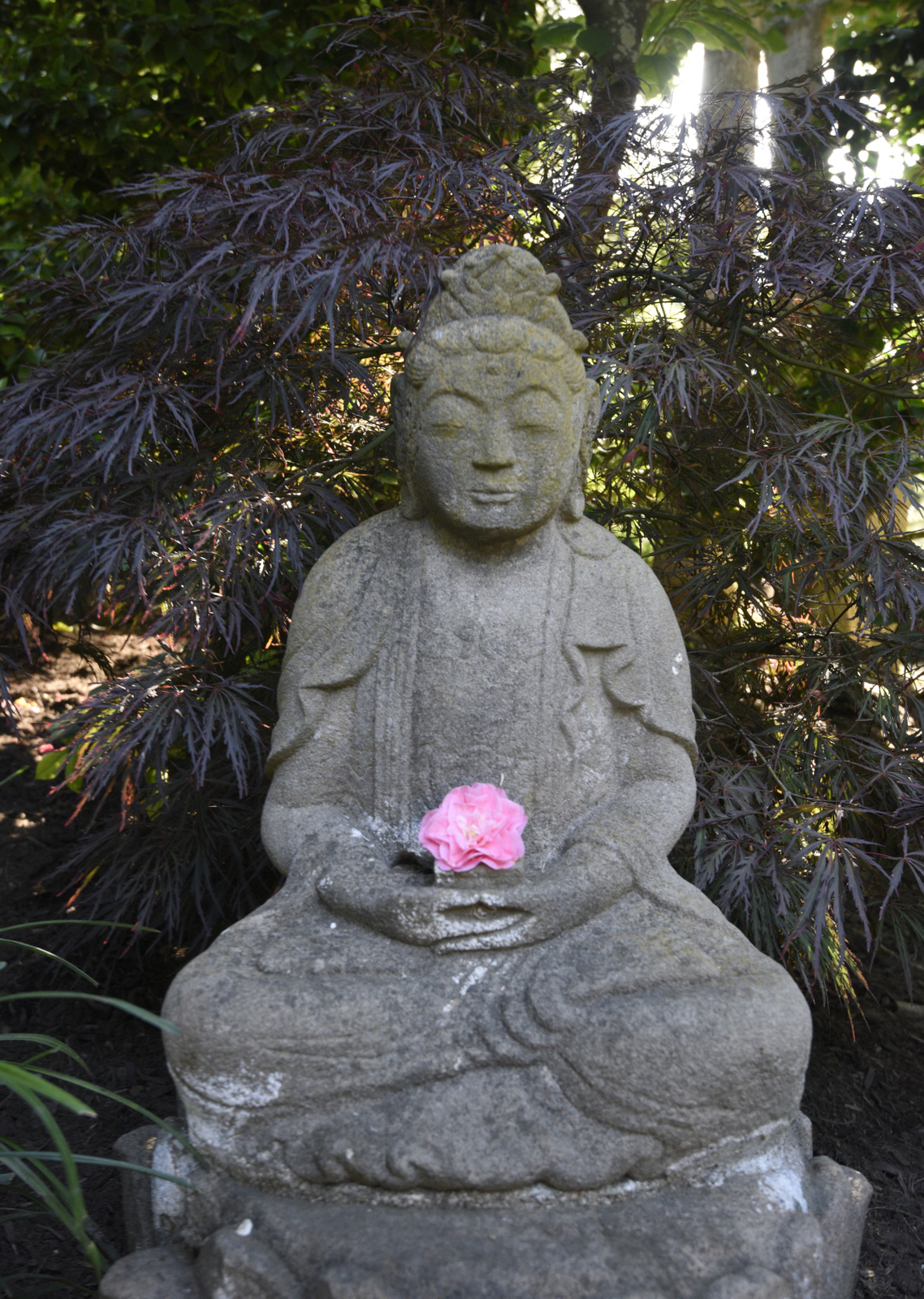
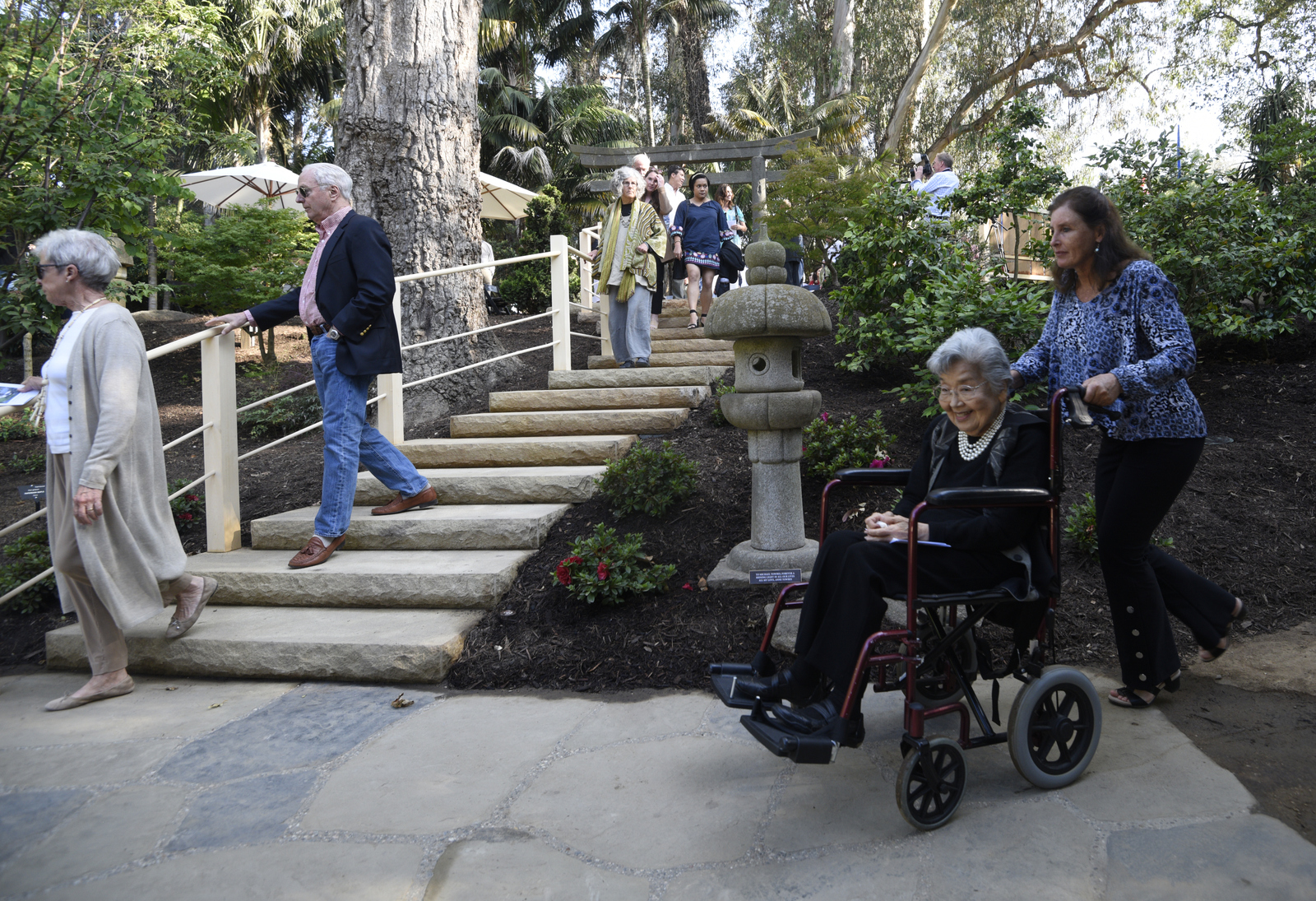
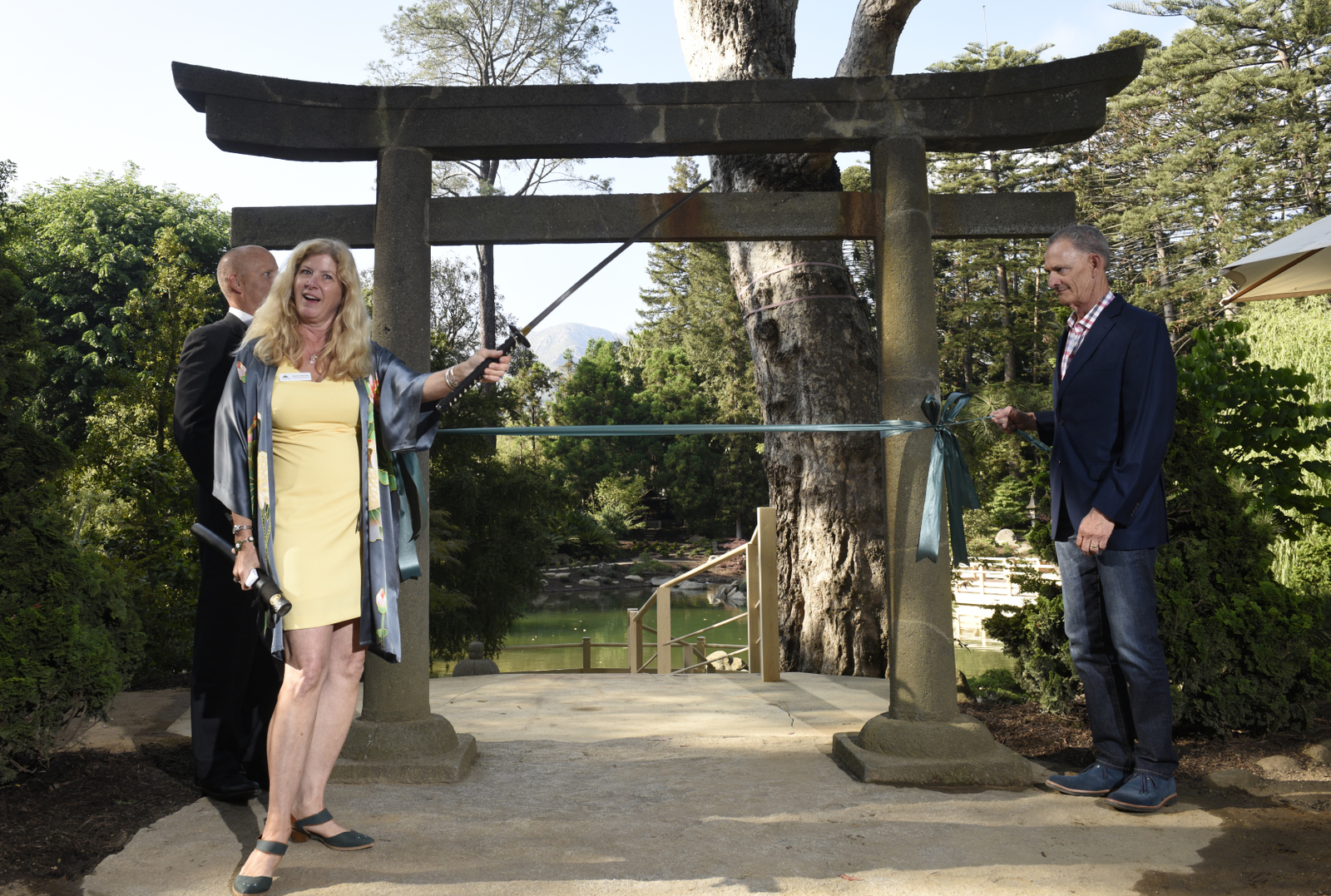
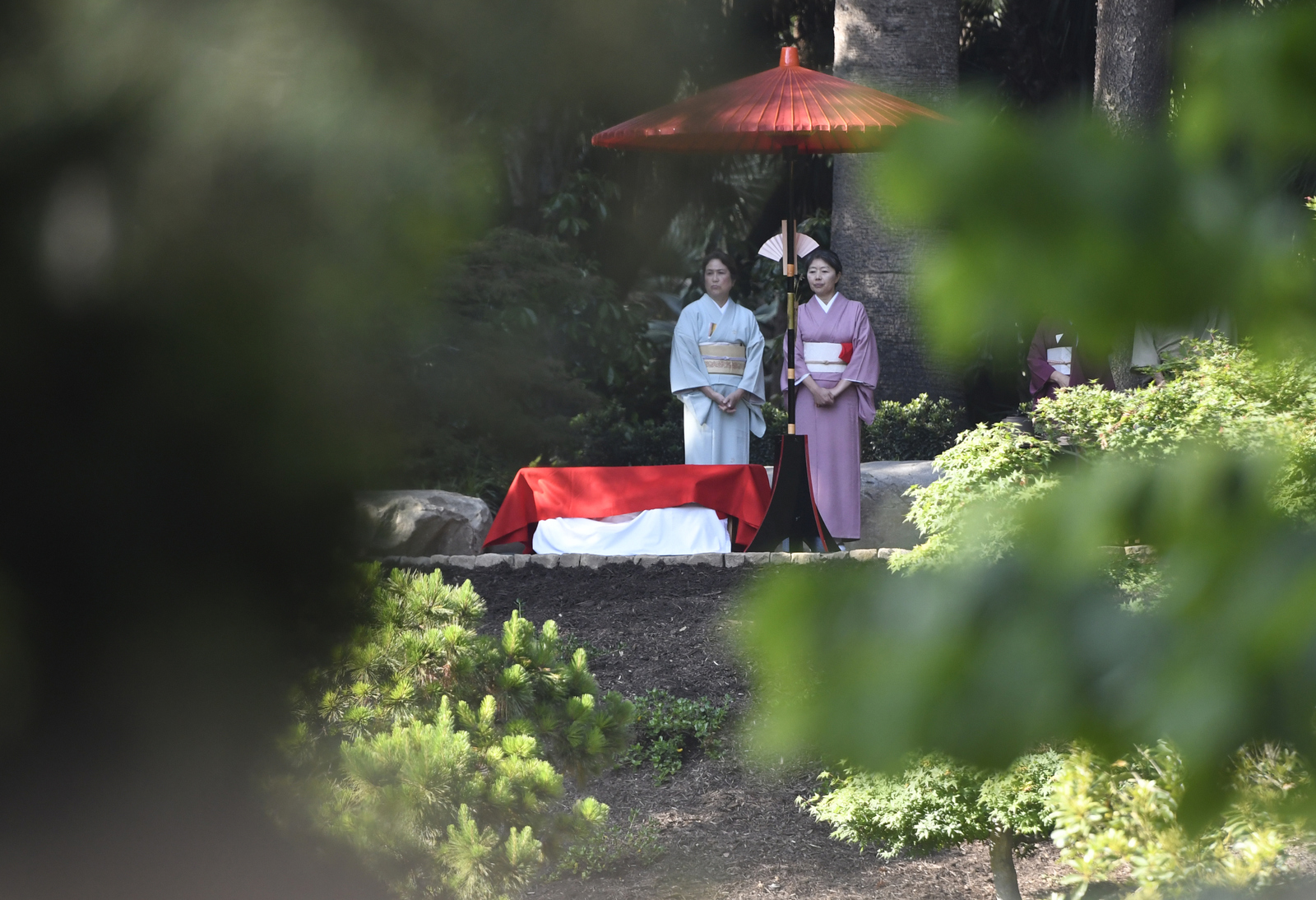
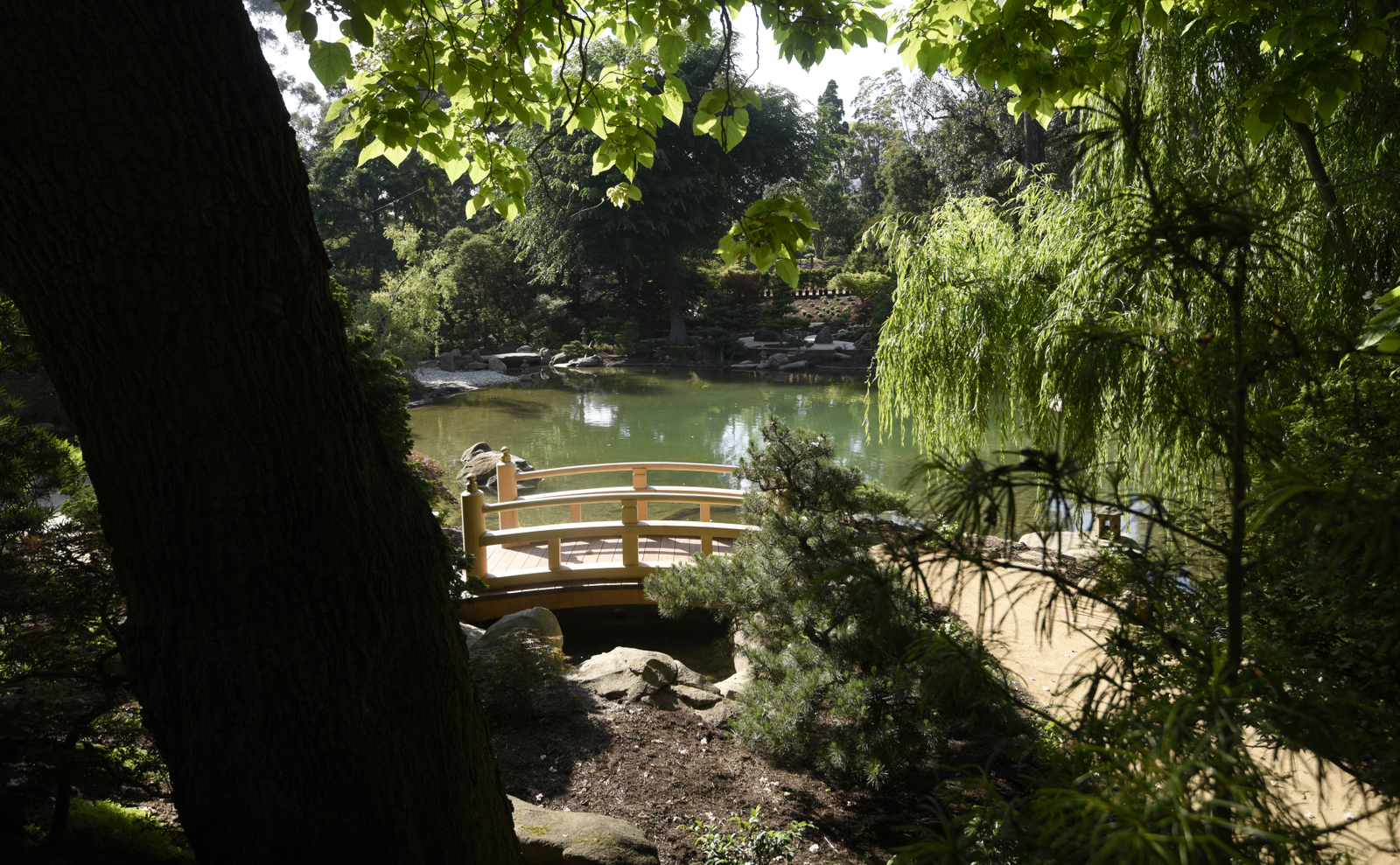
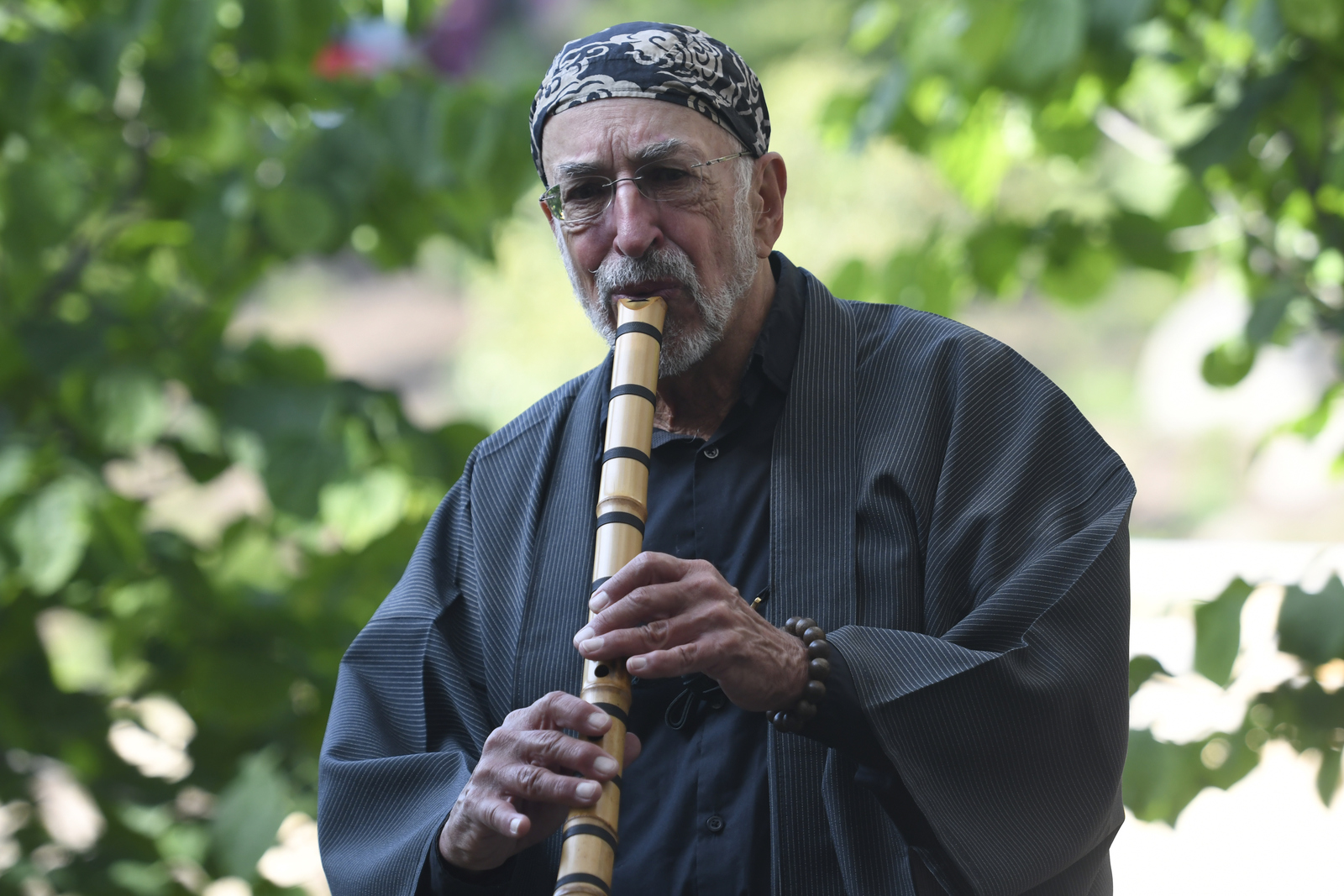



You must be logged in to post a comment.